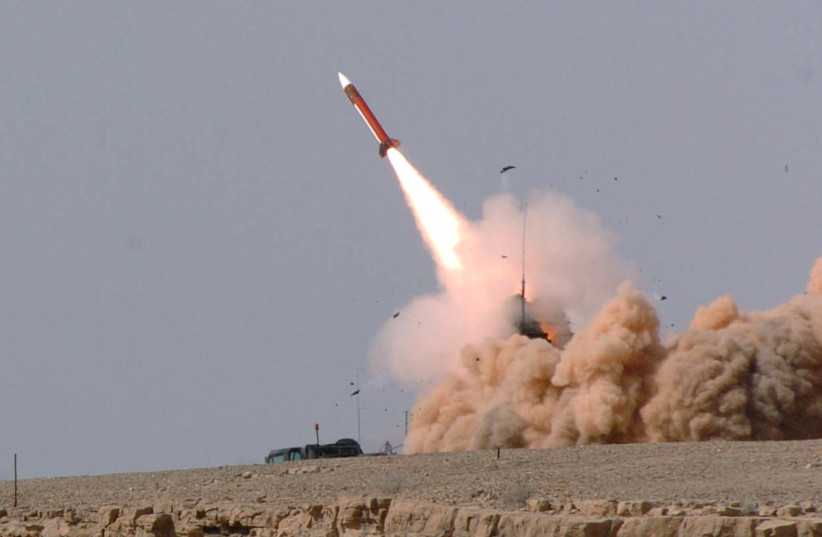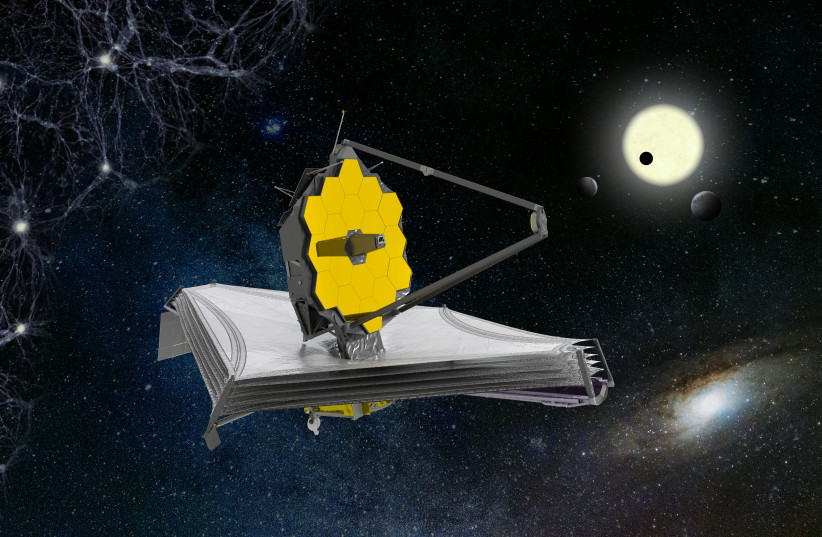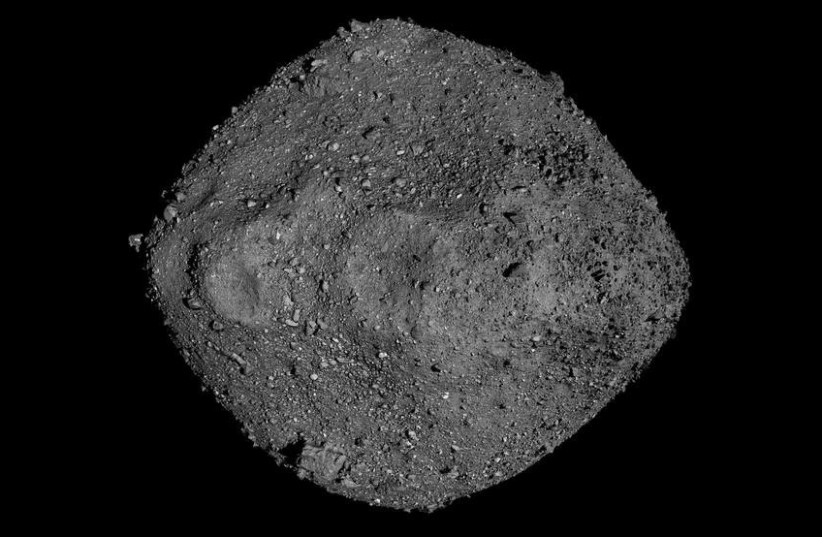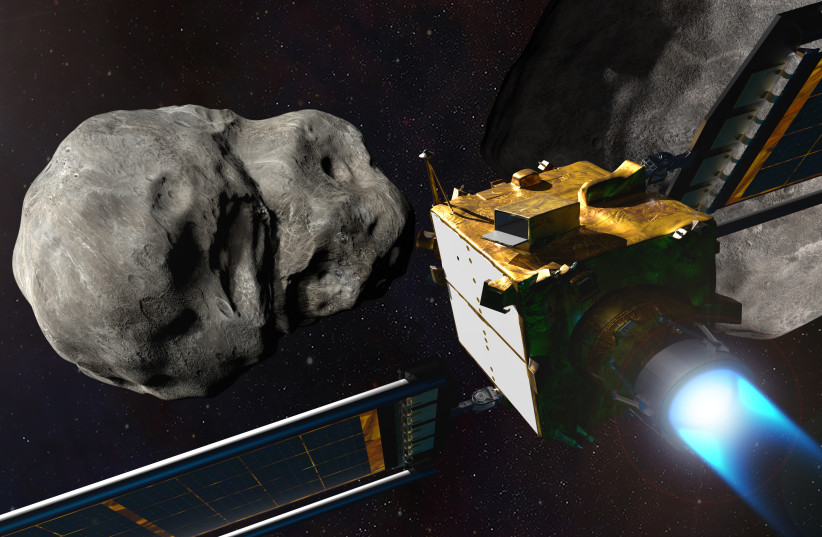Yom Kippur, the Jewish judgement day and Day of Atonement is about to arrive, and four asteroids are coming along with it, according to NASA's asteroid tracker.
Two of the asteroids are set to pass the Earth on Tuesday, October 4, which is Erev Yom Kippur. The other two asteroids will fly past the planet Wednesday, October 5, the day of Yom Kippur.
The four asteroids that are set to pass the Earth around Yom Kippur have been designated 2022 SM21, 2022 SO11, 2018 VG and 2022 SJ28, according to the Center for Near-Earth Object Studies (CNEOS) at NASA's Jet Propulsion Laboratory (JPL).
How big is the asteroid coming towards Earth in 2022?
As it turns out, all four of the asteroids passing by Earth on Yom Kippur are pretty small, says NASA.
The first one coming, asteroid 2022 SM21, is estimated to be anywhere between 9 and 20 meters in width.

To put that in perspective, 20 meters is around half the size of the average telephone pole.
However, while asteroid 2022 SM21 may not measure up to the other three Yom Kippur asteroids in terms of size, it leaves all of them in its figurative cosmic dust in terms of speed.
According to NASA CNEOS calculations, asteroid 2022 SM21 is barreling towards Earth's orbit at a speed of around 15.07 kilometers per second, which is roughly equal to 54,252 kilometers per hour or around 44 times the speed of sound.
To put this insane metric of speed into context, that's around 22 times faster than a Patriot missile.
The next asteroid coming is also on the small side. Asteroid 2022 SO11 is barely any larger than its predecessor, measuring somewhere between 11 meters and 25 meters wide. In terms of speed, it dips below the other one as well, clocking in at around 12.41 kilometers per second, roughly equal to 44,676 kilometers per hour or a little over 36 times the speed of sound.
These two asteroids are both set to pass the Earth on the day that Yom Kippur starts - October 4. The first asteroid to pass by on Yom Kippur itself on October 5 is 2018 VG. This asteroid is even smaller, measuring between 8.8 meters and 20 meters, and only flying at a relatively modest speed of around 6.67 kilometers per second, or around 24,012 kilometers per hour. That's still fast, almost 20 times the speed of sound, but still far slower than the other two.
The last asteroid coming on Yom Kippur, asteroid 2022 SJ28, is the largest of the group, ranging somewhere between 14 meters and 32 meters wide – although that is still on the smaller side. It's also only marginally faster than its predecessor, clocking in at 9.24 kilometers per second.
Will an asteroid hit Earth in 2022?
Yom Kippur is traditionally when, according to Jewish belief, God signs our fates in the Book of Life, judging our actions and deciding who lives and who dies. As such, the tone of the holiday, focused on repentance, atonement and judgement, may lead one to fear some apocalyptic scenarios.
Well, God's intervention would certainly be needed for these asteroids to actually cause such divine apocalyptic catastrophes, because as it stands now, based on NASA's calculations, these asteroids are nothing to worry about.
The asteroid that comes the closest around Yom Kippur is asteroid 2022 SO11. This asteroid is calculated to coast by the Earth at a distance of just over 1 million kilometers.
On a cosmic scale, this is actually pretty close, all things considered.

Consider NASA's James Webb Space Telescope, launched last year and currently in space changing how we view the cosmos. That telescope currently sits at the L2 Lagrange point, which is roughly 1.5 million kilometers away. This means that, in theory, asteroid 2022 SM21 will actually fly closer to Earth than the James Webb Space Telescope.
Having said that, however, it still is pretty far on a practical level. The Moon, after all, orbits the Earth at a distance of around 384,000 kilometers on average. That's much closer than the asteroid, so the Earth is in no danger of being struck this Yom Kippur without some divine intervention.
And divine intervention would also certainly be needed for the asteroid to not only hit the Earth, but actually do any damage at all.
According to research from the Davidson Institute of Science, the educational arm of Israel's Weizmann Institute of Science, an asteroid 140 meters in diameter or more would release an amount of energy at least a thousand times greater than that released by the first atomic bomb if it impacted Earth.
An even larger asteroid that's over 300 meters wide – like the Apophis asteroid – could destroy an entire continent. An asteroid over a kilometer in width – like asteroid 138971 (2001 CB21), which passed the Earth in early March 2022 – could trigger a worldwide cataclysm.
At its size, asteroid 2022 SM21 would, at best, cause a loud explosion upon atmospheric entry. As for any actual damage, it would be minimal or completely nonexistent.
But as for the question of whether an asteroid will ever hit the Earth in 2022, the answer is yes. Or rather, it already happened.
Back in March 2022, a small asteroid around half the size of a giraffe known as 2022 EB5 hit the Earth just hours after its discovery. But given how small it was, it didn't exactly result in any damage, either.
When is the next asteroid predicted to hit the Earth?
Not for a very, very long time. NASA has calculated that the Earth is safe from any catastrophic asteroid impacts for the next century, meaning no asteroid-induced Armageddon is on its way.

Which asteroid could potentially hit Earth?
Scientists don't know for sure, but there are a few candidates of most dangerous asteroid for the planet.
One of the most dangerous asteroids at the time of writing is Bennu, a gigantic 500-meter-wide asteroid that has an orbit that can cross with Earth's own.
If this asteroid impacted the Earth, the result would be catastrophic - but as far as NASA is aware, this won't be for a long time, if ever.

Do we have any way to stop an asteroid from hitting the Earth?
We just might, thanks to the hard work of scientists around the world.
The field of planetary defense is specifically organized to find ways of keeping the Earth safe from asteroids and scientists at NASA and across the globe are hard at work trying to do just that.
Most notably, this has involved pioneering the exciting technique of asteroid deflection, which uses kinetic energy through vehicular collision to ever so slightly change an asteroid's orbital path, meaning it would, in theory, no longer be set to crash into Earth but instead fly past it.
In layman's terms, NASA decided to make a spacecraft punch an asteroid to make it move out of the way.
In fact, that is exactly what recently happened over Rosh Hashanah in NASA's landmark Double Asteroid Redirection Test (DART) Mission, which tested out this theory on a faraway asteroid Dimorphous in the Didymous system.
At the time of writing, the cloud of dust around the asteroid following the impact has made it difficult to tell if this was successful. But if it was, then humanity may finally have a way to shield the Earth against asteroids.
Whether they can protect against asteroids sent by God as divine punishment this Yom Kippur, however, is another story.
